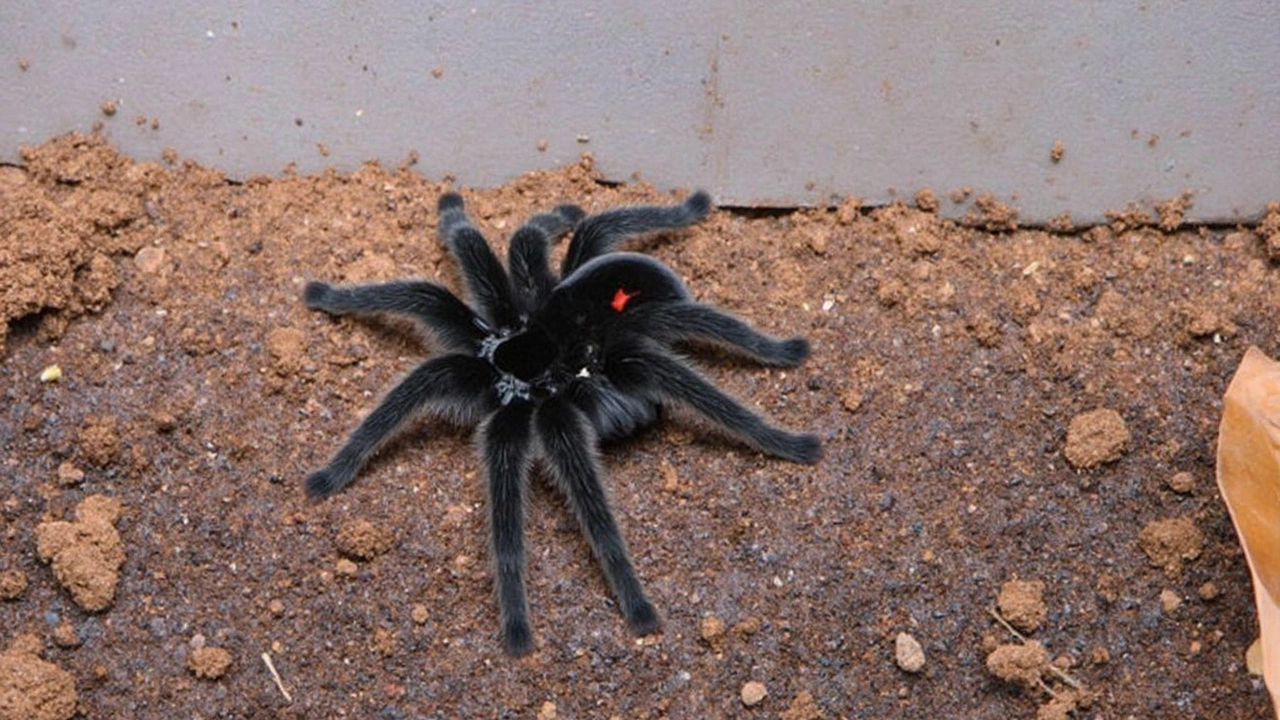Bright Beginnings: How Mexican Red Rump Tarantulas Landed in Florida
Picture walking through a scrubby patch of southern Florida and spotting a jet-black spider with an unmistakable red patch on its back. That’s the Mexican Red Rump Tarantula, or Tliltocatl vagans, an eye-catching newcomer to the state’s wild side. These spiders aren’t native — their journey started in the 1990s, when pet enthusiasts and traders unwittingly set them loose in the Sunshine State. By 1996, they’d carved out small colonies, mostly sticking to dry fields, overgrown lots, and the odd orange grove.
The reason you might hear about them now? It’s their mating season. Males creep out of their burrows, driven by instinct to find partners. But it’s a one-way trip: after breeding, most males quickly die, exhausted and vulnerable in the open. Females, meanwhile, can stick around for up to 15 years — a long haul for a spider, hunkered down in cozy burrows and waiting for the next wave of wanderers.

Surviving the Wild: Habitat, Threats, and the Human Factor
The Mexican Red Rump Tarantula’s striking looks — black velvet bodies topped with fiery red hairs — aren’t just for show. Their bodies are well designed for dry, loose soil. They scoot into burrows, hiding from predators and heat. Daytime is for laying low; they prefer to stalk insects and small critters at night.
The wild in Florida should be a good fit, but these tarantulas aren’t having an easy time. The problem? Modern farming and landscaping practices. The spiders feed on insects, but when fields and yards get dosed with pesticides, those bugs become lethal meals. This “secondhand poisoning” quietly chips away at tarantula numbers each year. Unlike many invasive species, their population isn’t booming — it’s actually shrinking.
It’s also tough for these tarantulas to compete with local wildlife and deal with changing land use. More land gets paved or converted to crops, meaning fewer safe spaces for burrows. Their shy nature means they aren’t often seen, but you might find signs — like tidy holes in sandy ground or the occasional adult wandering during mating season.
- Adult females can live for over a decade, while mature males rarely survive their first breeding season.
- They dig burrows in well-drained, sandy ground, particularly near fields or scrubland edges.
- Despite their size and hair-raising appearance, adults are docile and prefer hiding to fighting.
Because they’re not considered a native Florida species, Mexican Red Rump Tarantulas haven’t sparked big conservation projects. They sit in a strange spot: not welcomed by most, but not causing the usual chaos invasive species sometimes bring. Instead, their story acts as a quiet reminder of how easy it is for humans to accidentally shuffle species across the globe and reshape even the smallest corners of the wild.

Write a comment